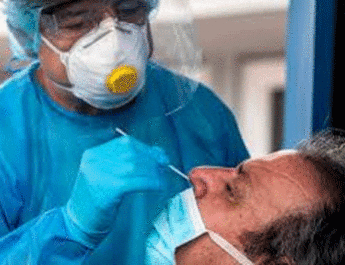Can’t there be toilet construction at a world heritage site for public use, asked Odisha advocate general Ashok Parija, defending the construction in response to a petition by Ardhendu Kumar Das, alleging cracks in the temple’s foundations.
A vacation Bench of Justices Bhushan R Gavai and Ms Hima Kohli reserved its order after hearing both sides including Parisa and senior advocate Mahalakshmi Pavani from the petitioner’s side.
At the outset, Justice Gavai congratulated the petitioners for getting the matter listed since the Bench could not do so as the power to lisst is vested with the Chief Justice of India, being the master of the roster.
The top court was hearing a challenge to an Orissa High Court order that had allowed the Archaeological Survey of India (ASI) to conduct a survey assessing the damage, if any, caused by construction activity around the temple.
The challenge was on the grounds that the High Court should have restrained further construction activity in the interim and that the permission the State had obtained for the same was not in accordance with law.
The construction by the State government was towards the Puri Srimandir Parikrama Project (temple heritage corridor), with the excavation particularly effecting an outer wall called the Meghanad Pacheri, the petitioners contended.
Pavani submitted today that the State’s action of carrying out the construction was illegal and in direct contravention of Sections 20A, B, and C of the The Ancient Monuments and Archaeological Sites and Remains Act.
“There is a clear embargo that there cannot be any construction on the prohibited area. They have not taken permission to construct a regulated area,” the senior counsel stated.
She then proceeded to read from a report to show that no heritage assessment work was done and there has been irreparable damage to the Temple.
“Large scale of crowd management is not possible with such excavations. the construction is shadowing the main temple entry. There has to be express permission from the Archaeological Survey of India.”
Advocate Vinay Navare, representing another petitioner, argued that excavation was being done in prohibited areas at the premises of what is a centuries-old monument.
“At times, the structure being raised goes upto 14.5 feet, which shadows the main temple,” he argued.
Advocate General Parija submitted that the Director of the Culture Department was the competent authority to grant necessary permissions in the matter. He emphasised that there was no construction within the prohibited area of 100 meters, but only repair work and remaking of existing structures like sewage drains and toilets.
“What is being carried out is to beautify the area and create facilities for the devotees. Some other work is in the security of the Temple. Can’t there be toilet construction in a site which is a world heritage site?”
“Males have used all resources but the females had to face so much chaos. Here there is a political colour to the petition,” he claimed. He asserted that the state government had all the necessary and prior approvals, and had done impact assessments.
###
s
C





